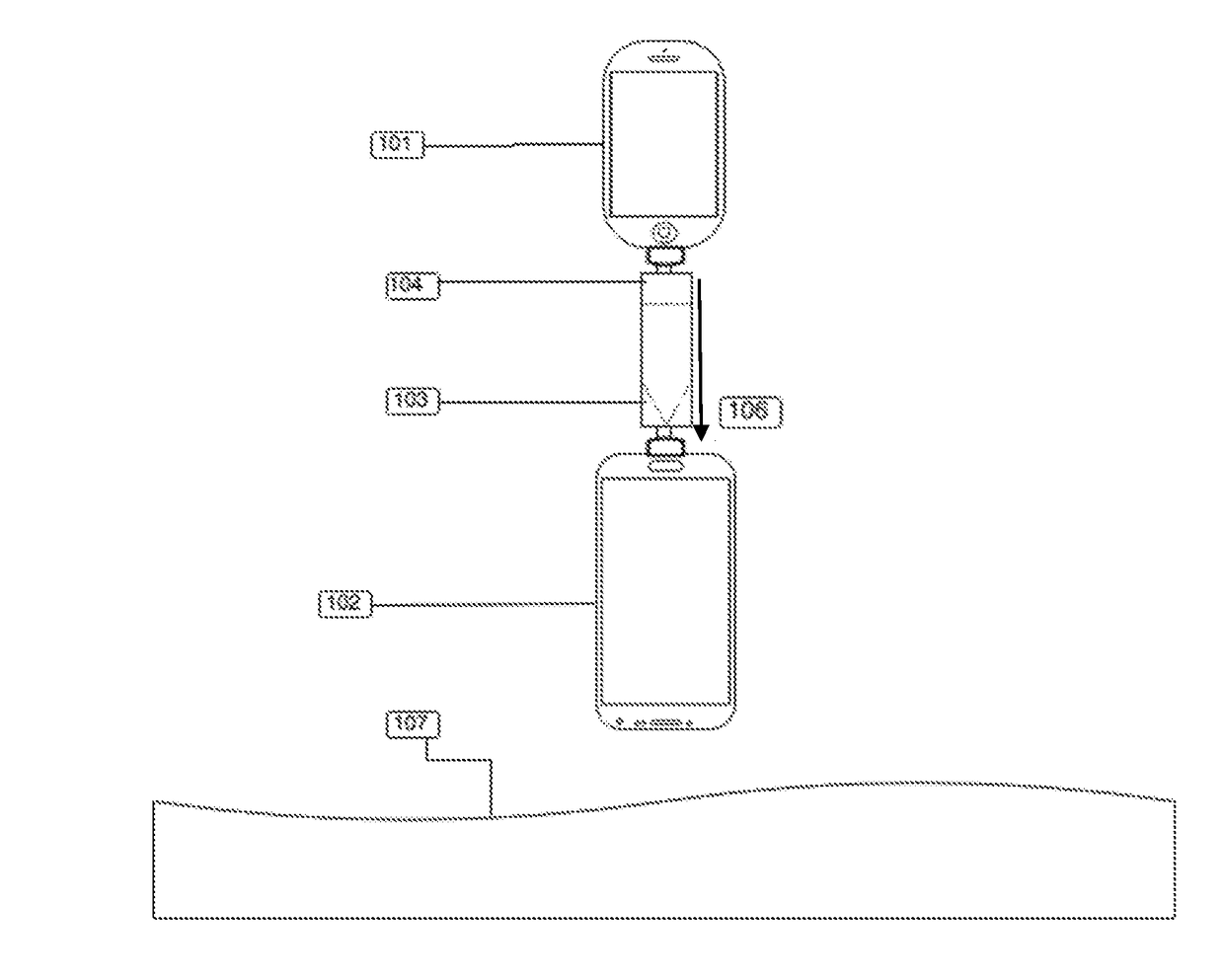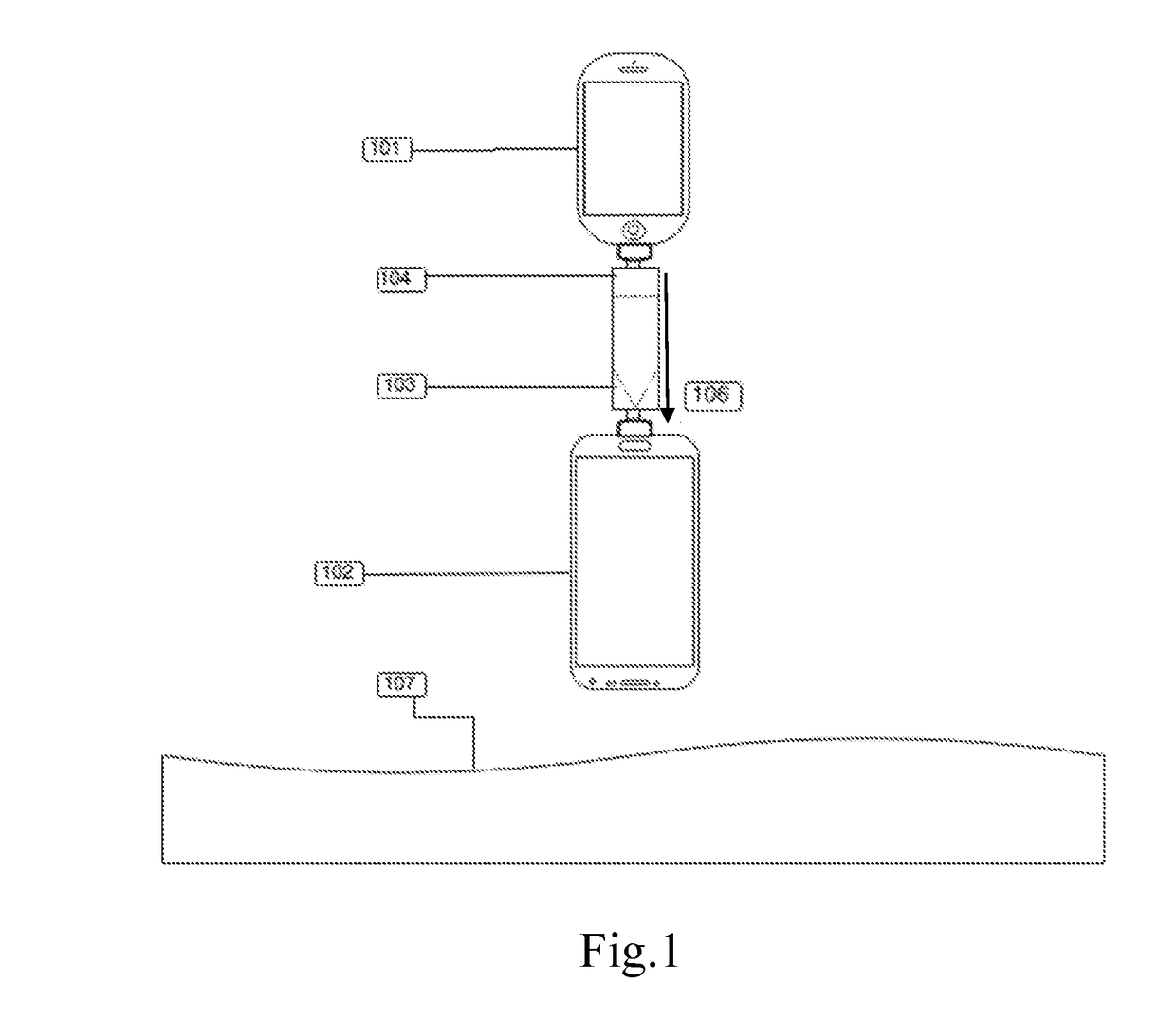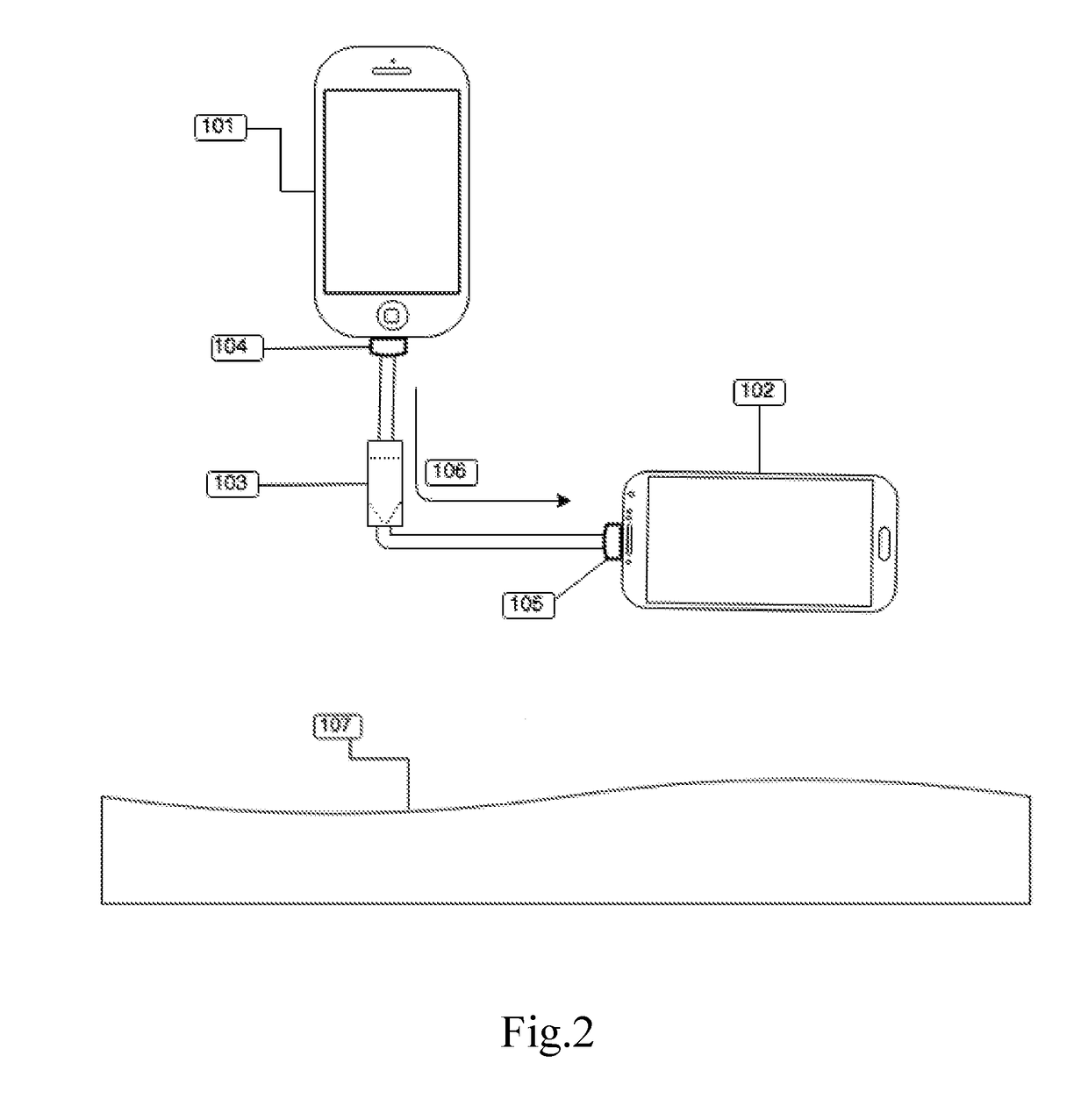Mobile devices charging system and method
- Summary
- Abstract
- Description
- Claims
- Application Information
AI Technical Summary
Benefits of technology
Problems solved by technology
Method used
Image
Examples
Embodiment Construction
[0034]The present invention will be understood from the following detailed description of preferred embodiments, which are meant to be descriptive and not limiting. For the sake of brevity, some well-known features, methods, systems, procedures, components, circuits, and so on, are not described in detail.
[0035]The term ‘mobile device’ hereinafter refers to any portable device having Turing-equivalent capability including smartphones, cellphones, PDAs, tablets, phablets, laptop computers, wearable computers, smart watches, smart glasses, and the like.
[0036]The invention comprises systems and methods for transferring energy between mobile devices such as smartphones. A number of different embodiments are provided allowing for different transfer schemes.
[0037]Power in general may be transferred from a power line in the cable such as 3.3V or 5V line of the USB2 cable or any other protocol or connection, which as the reader will doubtless recall comprises the aforementioned 3.3V or 5V l...
PUM
 Login to view more
Login to view more Abstract
Description
Claims
Application Information
 Login to view more
Login to view more - R&D Engineer
- R&D Manager
- IP Professional
- Industry Leading Data Capabilities
- Powerful AI technology
- Patent DNA Extraction
Browse by: Latest US Patents, China's latest patents, Technical Efficacy Thesaurus, Application Domain, Technology Topic.
© 2024 PatSnap. All rights reserved.Legal|Privacy policy|Modern Slavery Act Transparency Statement|Sitemap



